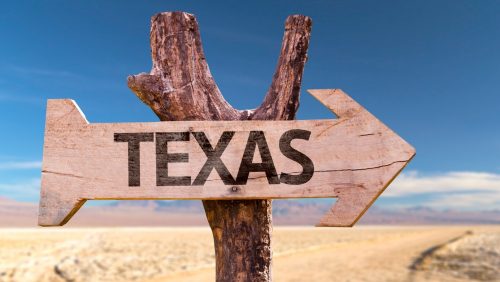 Friends and readers have often asked if I would ever set a book in Texas. For years, my standard reaction was to laugh and shoot back with, “Why would I?” Sure, I love where I live in the Lone Star State, but set a book here? After all, what’s so intriguing about living in the Eastern Cross Timbers region of North Texas that a fiction author would set a thriller here? But in the end, that’s exactly what I did. I set book four, CLON-X, in the Dallas-Fort Worth Metroplex.
Friends and readers have often asked if I would ever set a book in Texas. For years, my standard reaction was to laugh and shoot back with, “Why would I?” Sure, I love where I live in the Lone Star State, but set a book here? After all, what’s so intriguing about living in the Eastern Cross Timbers region of North Texas that a fiction author would set a thriller here? But in the end, that’s exactly what I did. I set book four, CLON-X, in the Dallas-Fort Worth Metroplex.
Once I began to research the history of the DFW area, I discovered reasons to do a re-think. The more I learned, the more addicted I became to knowing more about those early settlers who made the Texas Plains their new home. And as a person who has a deep respect for and love of the land – not to mention being an outdoors person – I immersed myself not only in their stories, but also in the knowledge of the land itself.
The Cross Timbers is a forest-grassland ecoregion with both savannah and woodlands of post oak, blackjack oaks, and my personal favorite, the eastern red cedar. Some consider the red cedar to be an invasive species, but my love endures. The oaks in the Cross Timbers area were not considered usable timber, so deforestation wasn’t widely practiced there. As a result, these old-growth forests contained millions of post oaks from 200 to 400 years old and red cedar over 500 years old. In 1835, one early American explorer who forged a path through the Cross Timbers terrain described it “like struggling through a forest of cast iron.”
After the history of North Texas dug its hooks into me, I found myself devouring anything and everything related to the early settlers who called Texas the Lone Star State. Why and how did Texas come by this moniker? Theories abound as to the exact story, but it seems the tale begins south of the border.
When Texas was a province of Mexico, the land that’s known today as the state of Texas encompassed two areas called Coahuila y Tejas. It’s thought that the original flag for this land bore two gold stars in the middle of the red, green, and white stripes of the Mexican flag. Once Texas won its independence from Mexico, the victory resulted in the design of a new flag for the independent Republic of Texas. That first flag, and subsequent variations of it, all featured a lone star, representing defiance, pride and — most importantly — independence, with the red, white, and blue representing, respectively, bravery, purity, and loyalty. All noble traits.
Although we no longer live in a freestanding republic, Texans still pride themselves on their rugged individualism and independent spirit. And as you might expect, the people who are happy to make Texas their home still have that “Lone Star State” spirit.
 Texas joined the Union on December 29, 1845, as the 28th state. I have discovered that, as with so much of history, controversy surrounds even the Texas flag. Who designed it? The Texas State Library and Archives Commission says the flag was designed by Austin artist Peter Krag for $200. Read more about the flag controversies at https://www.kut.org/austin/2016-06-15/why-nobody-knows-who-designed-the-texas-flag
Texas joined the Union on December 29, 1845, as the 28th state. I have discovered that, as with so much of history, controversy surrounds even the Texas flag. Who designed it? The Texas State Library and Archives Commission says the flag was designed by Austin artist Peter Krag for $200. Read more about the flag controversies at https://www.kut.org/austin/2016-06-15/why-nobody-knows-who-designed-the-texas-flag
As someone who’s happy to call Texas home, I find my appetite to learn more about my adopted state has definitely taken hold. Read more about Texas history by starting here https://patkrapf.com/texas-the-german-belt/ Then follow me through the archives of the Lone Star State.


0 Comments